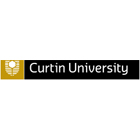Bachelor of Science (Nutrition and Food Science)
Bachelor of Science (Nutrition and Food Science)
In this course you will not only learn the science behind nutrition, but also how you can improve the nutritional status of populations. You’ll also develop high-level communication and teamwork skills. Your first year is interprofessional and taken with other health sciences students. In your second year you will choose…
Categories
COURSE DESCRIPTION
In this course you will not only learn the science behind nutrition, but also how you can improve the nutritional status of populations. You’ll also develop high-level communication and teamwork skills.
Your first year is interprofessional and taken with other health sciences students. In your second year you will choose between two streams: Nutrition or Food Science.
Nutrition
In this stream you will develop your understanding of the associations between diet and health outcomes. You’ll explore the social and cultural influences that impact dietary decisions within populations. You’ll also conduct a nutrition research project.
Course outcomes from the Nutrition stream meet entry requirements for Curtin’s Master of Dietetics course.
Food Science
This course is the only undergraduate course in Western Australia offering a stream in food science. In this stream you will focus on the nature and chemical composition of foods, ingredient behaviour under different processing conditions, and the application of this knowledge to improve the safety and quality of food.
You’ll undertake multiple field trips throughout the course and a work placement with an external organisation.
Professional recognition
Graduates of the Nutrition stream are eligible to apply for membership of the Public Health Association of Australia and apply as an Associate Nutritionist with the Nutrition Society of Australia.
Graduates of the Food Science stream are eligible to apply for membership of the Australian Institute of Food Science and Technology.
Career information
Careers
Dietician
Food scientist
Food technologist
Home economist
Nutritionist.
Industries
Community health
Education and research
Food manufacturing
Government lobby groups
Health and food fitness sector
Research.
What you’ll learn
Integrated discipline knowledge and evidence-based approaches to principles and practices within the field of food nutrition and food science.
Utilise sound knowledge and critical thinking to formulate solution to contemporary issues in nutrition and food science.
Apply effective and appropriate strategies to analyse complex nutrition and food science information from a variety of sources.
Effectively communicate ideas and understandings related to nutrition and food science, to technical and non-technical audiences, through written and oral means in ways appropriate to the audience or situation.
Confidently evaluate and use current and emerging technologies that are relevant to the field of nutrition and food science.
Demonstrate initiative and responsibility to deepen and broaden individual and professional learning.
Apply global perspectives to nutrition and food science issues.
Demonstrate cultural competence and ethics in to nutrition and food science practice.
Demonstrate a high level of personal autonomy, accountability and professional practice when interacting with diverse individuals, communities and organisations.
REQUIREMENTS
Students from different countries should have qualifications equivalent to Australian Year 12 and a scaled mark of at least 50 in English, Literature, or English as an Additional Language or Dialect.
IELTS (International English Language Testing System) – Listening, Reading, Writing, and Speaking – 6.0; Overall band score 6.5; TOEFL Score: 79 (overall); Reading 13; Listening 13; Speaking 18; Writing 21; Pearson Test of English – Listening, Reading, Writing, and Speaking – 50; Overall band score 58; TOEFL (Test of English as a Foreign Language) and PBT (Paper Based Test) – 570 and 4.5 in TWE; C1 Advanced Formerly known as Cambridge English: Advanced (CAE) 176 with 169 in Reading, Writing, Listening and Speaking. C2 Proficiency Formerly known as Cambridge English: Proficiency (CPE) 190 with 176 in Reading, Writing, Listening and Speaking.
EDUCATIONAL INSTITUTION
Curtin University is Western Australia’s largest and most culturally diverse university with Australia’s third largest international student population. Around 60,000 students from more than 130 countries study a Curtin degree, at locations including Perth, Margaret River, Kalgoorlie, Sydney, Malaysia and Singapore. Our cultural diversity adds a rich and valuable dimension to the campus atmosphere, preparing all graduates to live and work effectively in an increasingly global environment. We offer a range of industry-aligned undergraduate and postgraduate courses in business, humanities, health, engineering and related sciences. We also have a long-standing focus on Aboriginal and Torres Strait Islander education and culture, supported by our Centre for Aboriginal Studies.Curtin is widely recognised for its practical research that is focused on solving timely, real-world problems. In recent years our research activity has grown significantly, driving our rapid rise up the international university rankings.As a university that never settles, we will continue to develop existing partnerships and establish new ones in areas relevant to our research and teaching.




